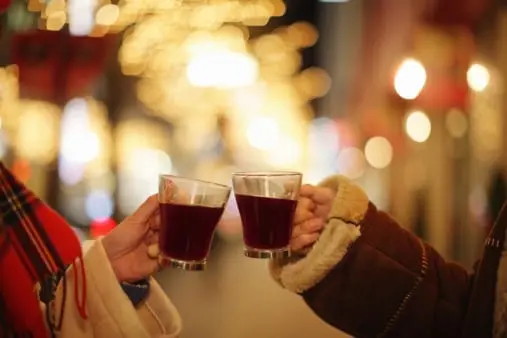With all the disadvantages of the coldest time of the year ― the need to wrap up, drown in snowdrifts and the danger of stretching out on the ice-winter has clear advantages. Among the latter ― an endless series of winter holidays, which, according to Irina Mak, can not do without mulled wine!

Inhale the pungent clove smell, sip the wine-red brew, which is not only hot ― but also hot, capable of reviving-and the frost does not seem so terrible! Not without reason, in German, mulled wine, aka Gluhwein, or Gluhende Wein, is a flaming wine. It burns in us. Paraphrasing the Crown, we say that mulled wine warms the members and resurrects the soul. How to achieve this state? Write down the recipe!
You will need a dry red wine. In extreme cases, semi-dry. You can, of course, and white-white mulled wine is also good, but not so beautiful. The main thing is not to listen to those who advise you to use cahors or port wine for this purpose ― port wine can be used better. About the choice of wine: it is not necessary, of course, to spend money on grand reserve, but lousy things are not good here, although there will probably be some ignoramus who will begin to convince you that once the wine boils, the quality of the main ingredient does not matter at the exit. In fact, the wine in mulled wine is brought to high temperatures (about 80 degrees), but in no case boils. This is the main taboo in mulled wine ― the wine is only heated. But in everything that concerns the fortress, fruit ingredients, spices, improvisation is possible.
According to the classic low-alcohol recipe, in a glass of boiling water, you need to dilute spices, a couple of tablespoons of sugar, boil for a minute and then mix with already hot wine. Throw in the fruit, lemon zest, and then quickly remove everything from the heat. Or you can take more water, boil it in a saucepan with already sliced fruit, cook for a couple of minutes, then, turning off the burner, hold the fruit broth under the lid to infuse, and only then combine it with hot wine and hold it on the fire for a little longer, without leaving the stove for a moment.
About the seasonings: cloves are considered an optional component, but I, for example, can’t imagine how mulled wine can not smell like cloves, so throw a few stars in the pan. And the main spice in mulled wine is cinnamon. However, it is the sticks that are needed, not the powder, and this, by the way, applies to all spices. Very appropriate in mulled wine anise and ginger, some people like to throw in two or three peas of allspice, which is also appropriate in this drink, but in the form of peas. Ground spices will make the mulled wine cloudy, and it will not be so pleasant to drink.
Sugar is better to take brown (for a bottle of wine-two or three tablespoons), although you can replace it with honey. If fruit is in short supply, one orange per bottle is quite enough ― you need to cut off the zest from it, chop it quite finely and throw it into a saucepan, and then add the pulp divided into slices. But if the fruit is available, do not limit yourself in the choice. It is very tasty to put an apple, lemon zest, cranberries, and even prunes in the mulled wine.
Those who do not have enough strength can add a glass or half a glass of rum (cognac) to the mulled wine. Cognac in mulled wine, by the way, is great friends with coffee. You need a lot of it ― about one and a half glasses: a few cups of espresso or simply brewed coffee without grounds, combine with a bottle of wine and an incomplete glass of cognac, pour in half a glass of sugar, warm it up properly on the fire, and drink to your health!
Yes, I was not mistaken: mulled wine in winter is always good. It is only necessary to stock up on transparent cups, so that not only the taste, but also the color pleases you.









